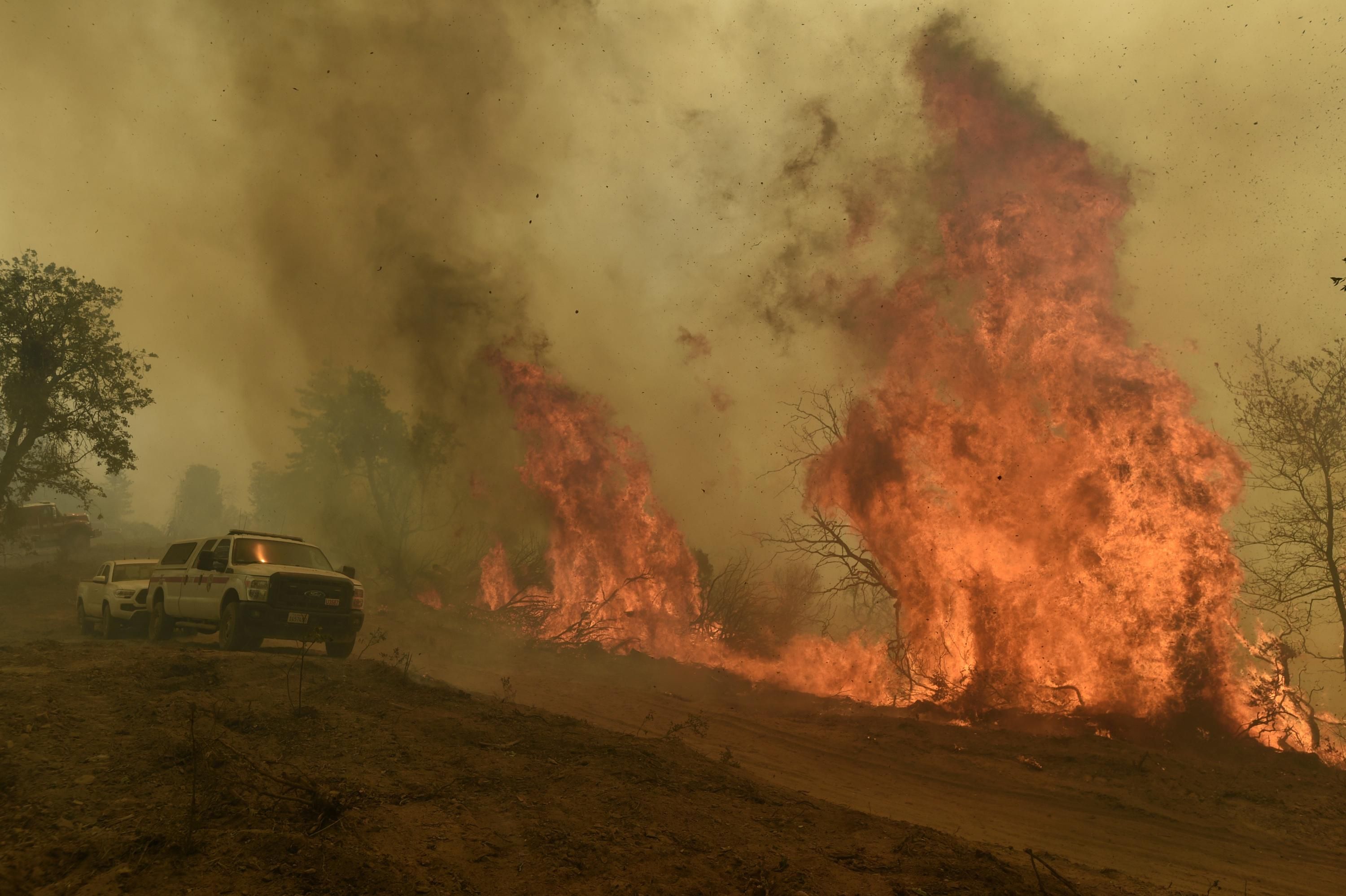
In Northern California, the McKinney Fire became the state's largest wildfire so far this year on Sunday, having burned through more than 51,000 acres in just two days and forcing thousands of people to flee their homes.
About 3,000 people were under evacuation orders in Siskiyou County on Sunday, a day after Gov. Gavin Newsom declared a state of emergency to allow easier access to federal aid and so out-of-state emergency workers could "assist California crews in battling the fires."
The fire began Friday in Klamath National Forest, fueled by unusually high temperatures and drought conditions which have left vegetation drier than normal. On Sunday the National Weather Service warned temperatures could rise to between 100° and 115°F before the bout of extreme heat was expected to end late Sunday night.
Meteorologists are also concerned about thunderstorms developing through Tuesday, potentially sparking more fires in the areas if they come with strong winds and lightning strikes.
The McKinney grew rapidly on Saturday morning, growing significantly in size between 9:30 and 10:30 am and forming what NASA calls "a fire-breathing dragon of clouds," officially called a pyrocumulonimbus—"an explosive storm cloud actually created by the smoke and heat from fire" which can generate its own weather and which grew to be more than 39,000 tall Sunday.
"The fire created thunderstorms, which could have caused new fires nearby," Brad Schaaf, a meteorologist in Medford, Oregon, told the New York Times Sunday.
In Yreka, the county seat of Siskiyou County, more than a dozen homes and other buildings had been destroyed by Sunday, and the number was expected to rise according to a spokesperson for the county sheriff's office.
"It's a very dangerous fire—the geography there is steep and rugged, and this particular area hasn't burned in a while," Tom Stokesberry, a spokesperson with the U.S. Forest Service, told the Associated Press.
Oregon state Rep. Dacia Grayber was camping near the Oregon-California border when the strong winds caused by the pyrocumulonimbus woke her and forced her to flee her campsite.
"The terrifying part for us was the wind velocity," she told the AP. "It went from a fairly cool breezy night to hot, dry hurricane-force winds."
Scientists agree that the continued extraction of fossil fuels and carbon emissions are contributing to more long-lasting and intense drought and extreme heat, making wildfires like the McKinney Fire more likely and harder to control as they spread through dry vegetation quickly.
As the fire began on Friday, the U.S. House passed the Wildfire Response and Drought Resiliency Act, a collection of nearly 50 bills to strengthen resiliency and mitigation projects for communities impacted by the climate crisis, protect watersheds like rapidly-drying Lake Mead in Nevada and Arizona, and make it easier for wildfire victims to get federal assistance.
Lawmakers are also reviewing the $739 billion package announced last week by Sen. Joe Manchin (D-W.Va.) and Senate Majority Leader Chuck Schumer (D-N.Y.), which includes some major investments in renewable energy—but also offers drilling giveaways to the oil and gas sector and provisions that could stymie solar and wind power development.
"Our state is depending on Congress taking bold, urgent action on climate," said Rep. Katie Porter (D-Calif.) on Friday.
This content originally appeared on Common Dreams - Breaking News & Views for the Progressive Community and was authored by Julia Conley.
Julia Conley | Radio Free (2022-07-31T19:04:26+00:00) Thousands Flee Homes as McKinney Fire Burns 51,000 Acres in Northern California. Retrieved from https://www.radiofree.org/2022/07/31/thousands-flee-homes-as-mckinney-fire-burns-51000-acres-in-northern-california/
Please log in to upload a file.
There are no updates yet.
Click the Upload button above to add an update.